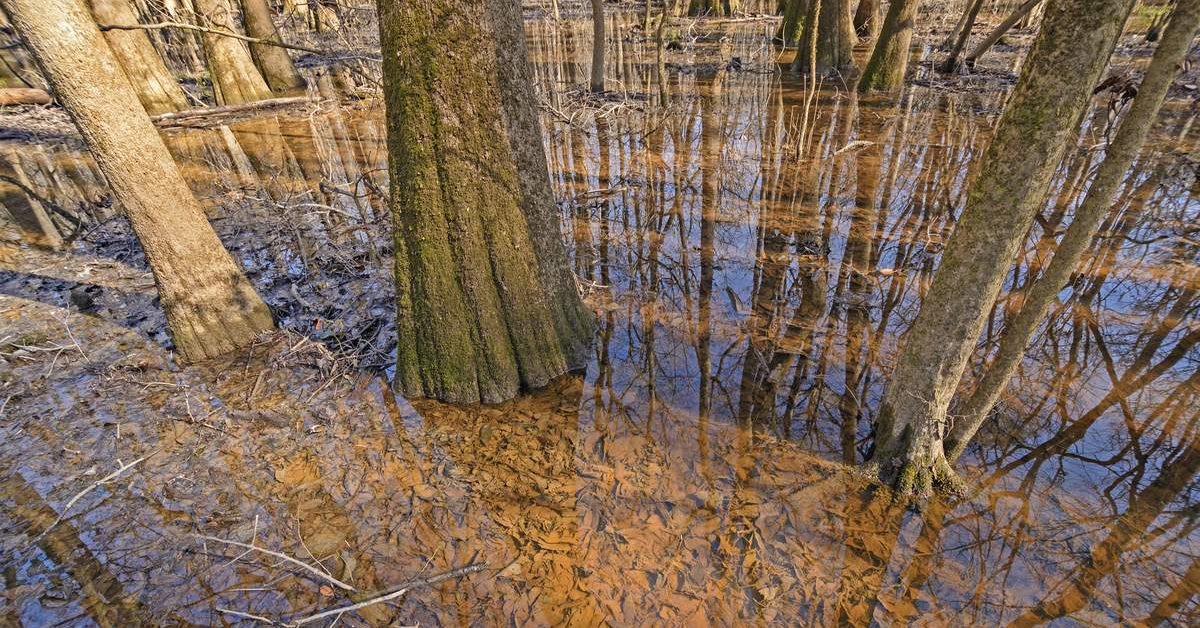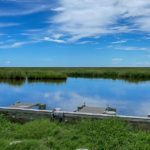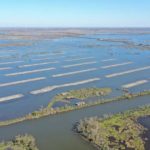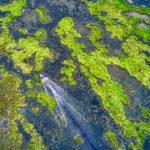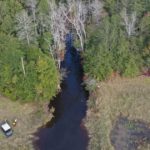The Environmental Protection Agency (EPA) defines wetlands as “areas where water covers the soil or is present either at or near the surface of the soil all year or for varying periods of time during the year.”
There are two different types of wetlands:
- Coastal or tidal wetlands. These can be found on coastlines and the extent of their wetness depends on the tide.
- Inland or nontidal wetlands. These are normally found on floodplains next to rivers or lakes.
All wetlands, both coastal and inland, are beneficial to our environment for a lot of reasons. One reason they’re important is that they are home to thousands of plant and animal species. If these areas weren’t protected, there would be a huge amount of ecosystems that could be harmed because of the loss of the plants and animals that live in wetlands.
Wetlands are protected by the United States Army Corps of Engineers (USACE), which regulates section 404 of the Clean Water Act to make sure regulated areas of wetlands are protected.

via Pixabay
What is a Wetland Delineation?
Wetland delineation is the first step you’ve got to take if you want to build on or make a change to any wetlands on your property. It involves identifying boundaries of wetlands and then researching to see if those wetlands fall under the jurisdiction of the USACE.
Obviously, if there are parts of your property you’re looking to build on that aren’t wetlands, you’re free to do so. However, it can sometimes be a bit tricky to figure out if an area is a wetland or an upland. The main difference between uplands and wetlands is that building on uplands doesn’t have the same environmental impacts and is not as “endangered” as wetlands.
The wetland delineation process is laid out in the 1987 Corps of Engineers Wetlands Delineation Manual, which is considered the authority on the delineation process.
You might think that wetlands are only marshes, swamps, and bogs, but sometimes wetland areas look just like uplands. There are very specific guidelines and standards that wetlands have to meet to be considered wetlands, including them being home to certain types of soil and vegetation. This is why wetland delineations are so important.
You can—and probably should— hire wetland delineators to go through a series of processes in order to make sure that it’s safe to build on the area of land you’ve picked. They’ll first look through maps and aerial pictures to figure out if the area is close to other known wetlands, like ponds, streams, or lakes.
Next, they’ll do a variety of on-site tests to see if the soil and vegetation on the land are consistent with wetlands or uplands.
If the results of the test show that the vegetation in your area is predominantly hydrophytic and the soil mainly hydric (both meaning they thrive in wet conditions), then the land will most likely be classified as a wetland.
The final report will decide if your land fits into one of these three categories:
- No wetlands found. The land isn’t classified as a wetland and you can do as you like.
- Isolated wetlands. There are wetlands in the area, but they’re not in the jurisdiction of the USACE.
- Regulated wetlands. Wetlands were found in the area and they’re regulated by the USACE.
If your property has an Isolated wetland, it means that the land isn’t connected to a pond, river, stream, or lake so it isn’t under the same jurisdiction as regulated wetlands.
Now, if you want to build on regulated wetlands, your permit won’t be as easy to get because the area is more protected. If you decide that you still want to build in the area, it might be necessary to make a wetland mitigation plan because it could help your chances of getting your permit approved so you can build.
A wetland mitigation plan shows that you’re planning on replacing some of the wetlands that you’re going to be removing by building on them. You can either build man-made wetlands, restore the wetland area so its original environmental impacts aren’t changed, or improve it by raising or filling the land to make it function better.
Wetland delineations for areas that are less than 5 acres can cost you between $4,000 and $8,000, and larger projects can cost anywhere between $15-20,000. It can be expensive, stressful, and time-consuming, which might make you wonder if it’s really worth building on them.
USACE evaluates over 85,000 permit applications every year and they approve 95% of them. The chances of you getting an approved permit are good, even if it’ll cost you a lot of time and money to do it.
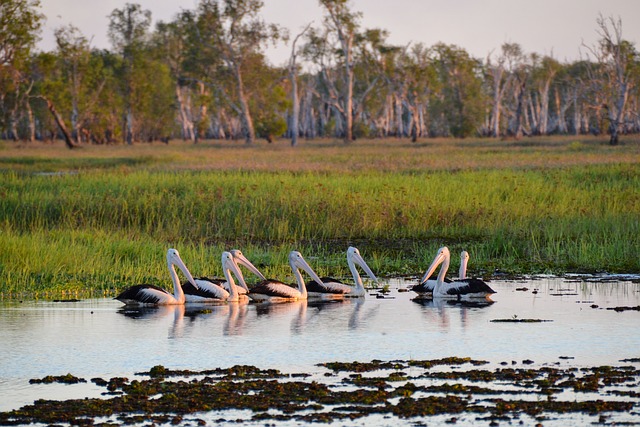
via Pixabay
What Are the Benefits of Protecting Wetlands?
Until fairly recently, wetlands were thought of as useless and were treated like wasted space, and a lot of them were drained, filled, or damaged. A 1990 study published by the US Fish and Wildlife Service showed that more than half of the wetlands that existed in the lower 48 states in the late 1700s has been destroyed. That’s more than 221 million acres!
It’s still an issue we’re dealing with today. About 35% of US wetlands have been destroyed since as recently as 1975, which means 25% of wetland species are now endangered and facing extinction. With our wetlands disappearing faster than forests, there has never been a more crucial time to protect them.
Now we know how beneficial wetlands are for our environment and we know how important it is to not only protect them but to try and fix the damage that’s already been done.
Protecting wetlands is one of the most important things we can do to help nature and wildlife thrive. There are a lot of benefits that come from wetlands, so let’s take a look at some of their main advantages.
Wetlands have also been called “nature’s kidneys” because they filter water by removing sediment and pollutants from water, which minimizes harmful substances entering mainstream waterways.
The Wildfowl and Wetlands Trust (WWT) says that wetlands remove up to 60% of metals in our water and eliminate up to 90% of nitrogen. So, as water use increases all over the world, this natural filtration process is becoming more important.
The National Park Service also reports that the wetlands in Florida’s Everglades replenish the Biscayne Aquifer, which is the main source of drinking water for the Miami metropolitan area.
Wetlands also help to protect against extreme weather events and help us recover from natural disasters. Like a sponge, wetlands absorb huge amounts of water that can be brought in by hurricanes, and by acting as a buffer between the mainland and the ocean, wetlands can help protect against floods and tsunamis.
Wetlands can also help protect us from droughts and can help reduce local air temperatures, which is even more important considering the effects of climate change and global warming.
Wetlands are also important to our health as well. They have supported human life for thousands of years and proved to be a major part of human health and prosperity. According to WWT, wetlands continue to provide jobs and food for over a billion people.
Wetlands provide areas to grow crops like rice, which half of the global population relies on as a main source of food. Agricultural lands need farmers to thrive and farmers earn a living by growing and selling the crops they tend.
WWT also emphasizes the importance of wetland areas for our mental health and well-being. Even just enjoying the sight of wetlands can reduce symptoms of anxiety, depression, and stress.
Wetlands also provide a place to relax. Because they have so many plants, animals, and beautiful water features, they provide excellent sightseeing, fishing, hunting, hiking, photography, and even bird-watching opportunities.
If we work together to protect our wetlands, we can make sure that they are around for thousands of years to come. There are a lot of people around the world who rely on these areas for food and water, so in some corners of the world, protecting wetlands is a matter of survival.
Check out Fenstermaker’s environmental service page for more information about wetland environments.
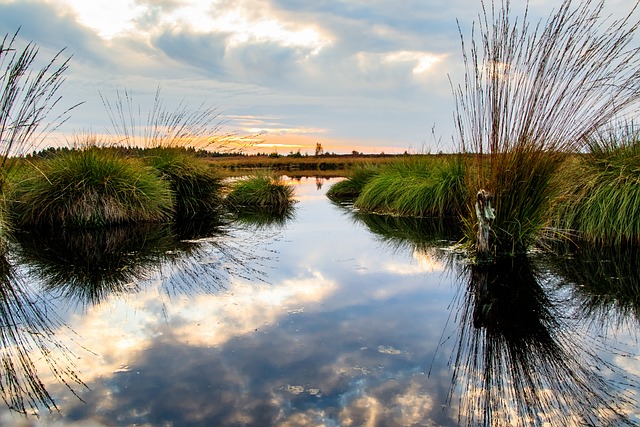
via Pixabay
What is Wetland Delineation vs Wetland Reconnaissance?
Wetland delineations are used to figure out if any of the land you’re planning to build on is a wetland. Wetland delineations are mandated by national and local authorities if there is any uncertainty if there are wetlands, streams, or shorelines on your property.
Wetland delineations create detailed maps of wetland or stream boundaries, as well as information about the terrain and buffer widths (buffer zones to protect wildlife and water conditions).
A wetland reconnaissance (which we at Fenstermaker refer to as a “desktop delineation”) is used if you’re intending to buy property. It’s a quicker process that provides general information about critical areas around the land you’re trying to buy. After a reconnaissance, you’ll get a report stating if wetlands are potentially present or absent.
Why Do I Need a Wetland Delineation on My Own Land?
Wetlands are federally protected, so it doesn’t matter if you own the land or not. If you want to make any changes to your property that includes disturbing a wetland area in any way, you have to have a wetland delineation done. Wetland regulations are enforced by the EPA, even if they’re on privately owned property.
Sometimes projects can take several years—especially big projects. If you’re still working on a project, or if you haven’t had a wetland delineation done in the last five years, you’ll need to get another one done before you proceed with any more construction.
Do I Need a Wetland Delineation Before Starting My Project?
You’ll always need a permit to build on regulated wetlands; the only exceptions are for certain agricultural projects. The process can take a while and the permits are only approved after wetland delineations have been completed, so you’ll need to start your wetland delineation quite a while before your construction begins.
How Long Does a Wetland Delineation Last?
Wetland delineations can be long processes. It can take up to a week to gather information on your site and it could take a few months after that for you to get the results back.
If your permit is approved by the USACE and you find out that you need some sort of approval from local authorities as well, your delineation will be valid for five years after your notification of approval.
If you think the construction process will take longer than that, you’ll need to look into getting your permit extended. If you forget—or just choose not to do it—your permit will expire after the five-year period and you’ll have to go through the entire process from the very beginning.
Final Thoughts
The wetland delineation process can be time-consuming, stressful, and expensive. This, combined with the harmful impacts building could have on wetland areas, makes building on wetlands a tricky business. Make sure you do your research and weigh the pros and cons before you decide whether or not it’s worth the environmental and financial impacts.
